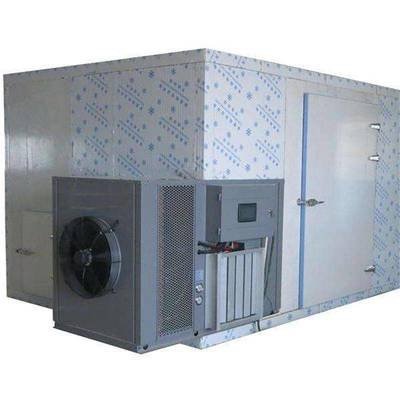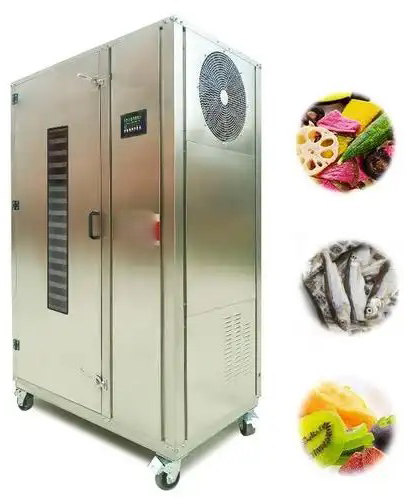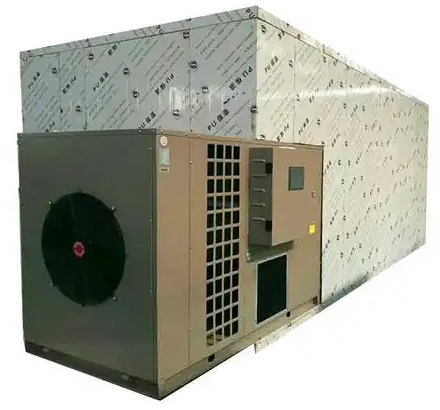
Content Menu
● Understanding Food Drying
● Types of Food Dryers
>> Heat Pump Dryers
>> Vented Dryers
>> Condenser Dryers
● Comparing Heat Pump Dryers with Vented and Condenser Dryers
● Applications in Food Drying
● Factors Influencing Your Choice
● Maintenance Considerations
● Conclusion
● FAQ
>> 1. What is a heat pump dryer?
>> 2. How does a vented dryer work?
>> 3. What are the advantages of using a condenser dryer?
>> 4. Which dryer is best for preserving flavor in dried foods?
>> 5. Are heat pump dryers more expensive than other types?
In the world of food drying, choosing the right equipment can significantly impact the quality and efficiency of the drying process. Among the various options available, heat pump dryers have gained popularity due to their energy efficiency and effectiveness. This article will explore the differences between heat pump dryers, vented dryers, and condenser dryers, focusing on their applications in food drying. We will delve into their mechanisms, advantages, and disadvantages, ultimately helping you decide which type of dryer is best suited for your needs.

Understanding Food Drying
Food drying is a preservation method that removes moisture from food to inhibit the growth of bacteria, yeasts, and molds. This process not only extends the shelf life of food but also concentrates flavors and nutrients. Various methods can be employed for food drying, including air drying, sun drying, and using specialized equipment like food dehydrators or industrial dryers.
Types of Food Dryers
Heat Pump Dryers
Heat pump dryers operate by using a refrigeration cycle to extract moisture from food products. They are highly efficient because they recycle heat within the system.
- Mechanism: A heat pump dryer uses a compressor to circulate refrigerant through evaporator and condenser coils. The evaporator absorbs heat from the environment and evaporates the refrigerant. The compressor then compresses this vapor, raising its temperature before it passes through the condenser, where it releases heat to dry the food.
- Advantages:
- Energy-efficient: Heat pump dryers consume less energy compared to traditional dryers.
- Gentle drying: They operate at lower temperatures, preserving the quality of sensitive foods.
- Environmentally friendly: Reduced carbon footprint due to lower energy consumption.
- Versatility: Suitable for a wide range of food products, including fruits, vegetables, herbs, and meats.
- Disadvantages:
- Higher initial cost: The investment in a heat pump dryer can be significant.
- Longer drying times: While they are efficient, they may take longer to dry food compared to other methods.
- Complex maintenance: Heat pump systems may require more specialized maintenance compared to simpler dryer types.
Vented Dryers
Vented dryers work by expelling hot air that has absorbed moisture from the food into the atmosphere.
- Mechanism: These dryers draw in air from outside, heat it up, and blow it into the drying chamber. The moist air is then vented outside while fresh air is drawn in to continue the process.
- Advantages:
- Faster drying times: Vented dryers typically dry food more quickly than heat pump models.
- Lower initial cost: Generally less expensive than heat pump dryers.
- Simplicity: Easier to operate with fewer complex components.
- Disadvantages:
- Energy consumption: They can consume more energy due to constant heating of new air.
- Limited control over humidity: The external venting can lead to inconsistent drying conditions.
- Environmental concerns: Venting hot air outside can contribute to energy loss and environmental impact.
Condenser Dryers
Condenser dryers condense moisture from the air inside the dryer and collect it in a tank or drain it away.
- Mechanism: Similar to heat pump dryers but without recycling heat. They draw in moist air, cool it down to condense water vapor, and then reheat the remaining air for further drying.
- Advantages:
- No need for external venting: This makes them suitable for indoor use.
- Moderate energy efficiency compared to vented dryers.
- Convenience: Many models come with built-in water tanks that are easy to empty or have drainage options.
- Disadvantages:
- Less efficient than heat pump dryers: They do not recycle heat as effectively.
- May require regular maintenance to clean condensate tanks, which can become clogged over time.

Comparing Heat Pump Dryers with Vented and Condenser Dryers
| Feature | Heat Pump Dryer | Vented Dryer | Condenser Dryer |
| Energy Efficiency | High | Moderate | Moderate |
| Initial Cost | High | Low | Moderate |
| Drying Time | Longer | Shorter | Moderate |
| Temperature Control | Excellent | Poor | Moderate |
| Environmental Impact | Low | High | Moderate |
| Versatility | Very High | Limited | Moderate |
Applications in Food Drying
When selecting a dryer for food processing, consider factors such as product type, desired moisture content, and production scale.
- Heat Pump Dryers are ideal for delicate foods such as fruits and vegetables that require gentle drying at low temperatures. They are also suitable for high-value products where quality preservation is paramount. For example, when drying herbs like basil or mint, maintaining essential oils is crucial; thus, a heat pump dryer is preferable.
- Vented Dryers may be more appropriate for bulk drying applications where speed is essential and energy costs are less of a concern. For instance, if you are processing large quantities of grains or legumes that can withstand higher temperatures without losing quality, vented dryers could be an effective choice.
- Condenser Dryers offer flexibility for smaller operations or those with space constraints since they do not require external venting. They are particularly useful in urban settings where venting outside may not be feasible.
Factors Influencing Your Choice
When deciding on a dryer type for your food processing needs, consider these factors:
- Type of Food Being Dried: Different foods have varying moisture contents and sensitivity levels. For example:
- Fruits like apples and pears benefit from gentle drying provided by heat pump technology.
- Vegetables such as carrots or potatoes may tolerate higher temperatures found in vented systems.
- Volume of Production: Larger operations might prioritize speed and efficiency over initial costs. In contrast:
- Small-scale producers might focus on quality preservation offered by heat pump systems despite longer drying times.
- Energy Costs and Environmental Impact: In regions with high energy costs or strict environmental regulations:
- Heat pump dryers can provide significant savings over time due to their efficiency.
- Space Availability: If space is limited:
- Consider condenser dryers that do not require external ventilation but still provide effective moisture removal.
Maintenance Considerations
Regardless of which type of dryer you choose:
- Regular maintenance is essential for optimal performance.
For heat pump dryers:
- Ensure proper cleaning of filters and coils to maintain efficiency.
For vented dryers:
- Check vents regularly for blockages that could impede airflow.
For condenser dryers:
- Empty water tanks frequently and inspect drainage systems for clogs.
Conclusion
In conclusion, choosing between a heat pump dryer, vented dryer, or condenser dryer depends on your specific needs and circumstances. Heat pump dryers stand out for their energy efficiency and gentle drying capabilities, making them an excellent choice for high-quality food preservation. However, if speed is your priority or if you're working with larger volumes of less delicate products, vented or condenser dryers may be more suitable options.
Ultimately, understanding your requirements will guide you toward making an informed decision that balances cost, efficiency, and product quality in your food drying operations. As technology continues to advance in this field, staying informed about new developments will further enhance your ability to select the best equipment for your needs.

FAQ
1. What is a heat pump dryer?
A heat pump dryer is an energy-efficient appliance that uses a refrigeration cycle to remove moisture from food while recycling heat within the system.
2. How does a vented dryer work?
A vented dryer pulls in outside air, heats it up to dry food products inside the chamber, and then expels moist air outside through vents.
3. What are the advantages of using a condenser dryer?
Condenser dryers do not require external venting and can be used indoors; they also offer moderate energy efficiency compared to vented models.
4. Which dryer is best for preserving flavor in dried foods?
Heat pump dryers are best suited for preserving flavor as they operate at lower temperatures that prevent degradation of sensitive compounds in foods.
5. Are heat pump dryers more expensive than other types?
Yes, heat pump dryers generally have a higher initial cost compared to vented or condenser dryers but offer long-term savings through energy efficiency.












